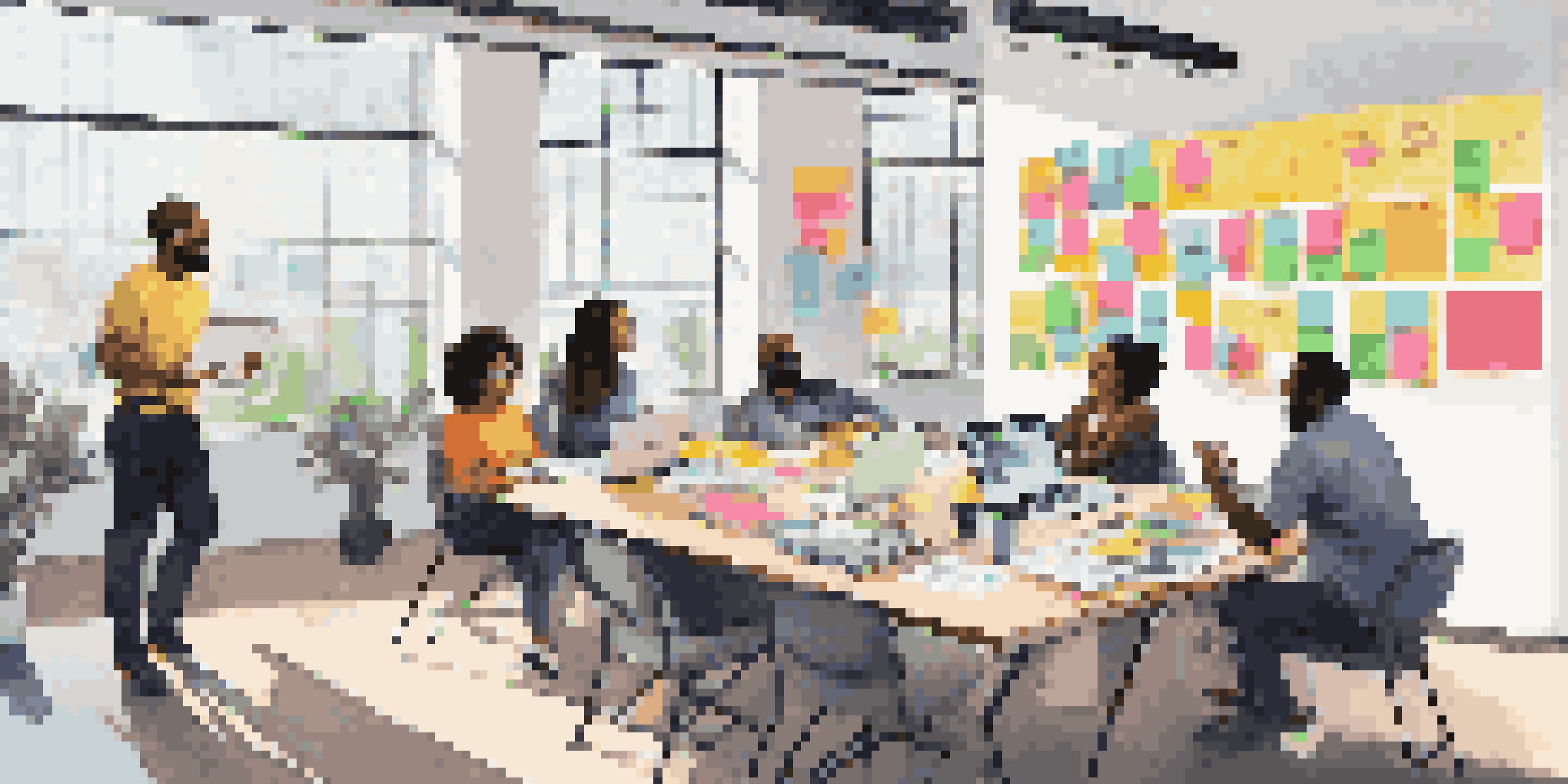The Benefits of Teaching Critical Thinking in the Workplace

Understanding Critical Thinking in the Workplace
Critical thinking is the ability to analyze information objectively and make reasoned judgments. In the workplace, this skill empowers employees to solve problems effectively and make informed decisions. By fostering critical thinking, organizations can enhance collaboration and innovation, leading to a more dynamic work environment.
The ability to think critically is the key to success in the workplace and beyond.
The essence of critical thinking lies in questioning assumptions, evaluating evidence, and considering alternative perspectives. When employees engage in this process, they become more adept at identifying potential solutions to challenges that arise. As a result, teams can work more cohesively, leveraging diverse viewpoints to tackle complex issues.
Ultimately, the understanding of critical thinking sets the foundation for a culture of continuous improvement. Organizations that prioritize this skill not only benefit from improved decision-making but also cultivate a workforce that feels empowered to contribute meaningfully.
Enhancing Problem-Solving Abilities
One of the most significant benefits of teaching critical thinking is its direct impact on problem-solving abilities. Employees trained in critical thinking can dissect issues into manageable parts, making it easier to find effective solutions. This approach not only saves time but also minimizes the likelihood of errors that could arise from hasty decisions.

For example, consider a project team facing a tight deadline. A critical thinker would assess the situation by identifying key obstacles and brainstorming viable alternatives. By analyzing the pros and cons of each option, the team can choose a path that maximizes efficiency and effectiveness.
Critical Thinking Enhances Problem-Solving
Training employees in critical thinking improves their ability to analyze issues and develop effective solutions.
In this way, critical thinking transforms challenges into opportunities for growth. Employees become more resourceful and confident, often leading to innovative solutions that drive the organization forward.
Boosting Team Collaboration and Communication
Teaching critical thinking fosters an environment where collaboration thrives. When team members feel comfortable sharing their thoughts and questioning ideas, communication improves significantly. This open dialogue leads to richer discussions and more creative outcomes.
In a time of drastic change, it is the learners who will inherit the earth, while the learned find themselves beautifully equipped to deal with a world that no longer exists.
Imagine a brainstorming session where everyone contributes without fear of judgment. In such an atmosphere, the exchange of diverse perspectives can spark fresh ideas and lead to innovative solutions. Furthermore, team members learn to appreciate differing viewpoints, which strengthens relationships and builds trust.
As collaboration enhances, so does the overall team performance. Critical thinking equips employees with the tools to engage constructively, ensuring that every voice is heard and valued in the decision-making process.
Promoting Adaptability in a Changing Environment
In today's fast-paced work environment, adaptability is crucial. Critical thinking equips employees with the mindset to adjust to new circumstances and challenges effectively. This flexibility is vital for maintaining productivity and morale during periods of change.
For instance, when an organization undergoes restructuring, critical thinkers can evaluate the situation, identify potential impacts, and propose strategies to navigate the transition. Their ability to think critically enables them to remain calm and focused, even when faced with uncertainty.
Boosts Team Collaboration and Trust
Encouraging an environment of critical thinking fosters open communication, leading to stronger team dynamics and innovative outcomes.
By promoting adaptability through critical thinking, organizations create a resilient workforce capable of thriving in any situation. This adaptability not only benefits individual employees but also enhances the organization's overall agility and responsiveness.
Driving Innovation and Creativity
Critical thinking is the fuel that drives innovation and creativity within an organization. When employees learn to think critically, they become more curious and willing to explore new ideas. This mindset encourages experimentation and the pursuit of unconventional solutions.
Take, for example, a tech company developing a new product. Critical thinkers on the team will question existing designs and processes, leading to innovative features that meet user needs more effectively. Their willingness to challenge the status quo can lead to breakthroughs that set the organization apart from competitors.
By nurturing a culture of critical thinking, organizations ignite the creative potential of their workforce. This not only results in innovative products and services but also fosters an environment where continuous improvement is the norm.
Improving Decision-Making Processes
Critical thinking enhances decision-making processes at all levels of an organization. When employees are trained to analyze data and assess options critically, they can make more informed choices. This leads to decisions that are not only effective but also aligned with the organization's goals.
Consider a marketing team deciding on a new campaign. Critical thinkers will evaluate market research, customer feedback, and previous campaign performance before finalizing their strategy. This thorough analysis minimizes risks and maximizes the likelihood of success.
Drives Innovation and Continuous Learning
A culture of critical thinking ignites creativity and promotes ongoing professional development, enhancing organizational resilience.
As a result, improved decision-making leads to better outcomes, increased efficiency, and ultimately, a stronger bottom line. Organizations that prioritize critical thinking in their decision-making processes are better equipped to navigate challenges and seize opportunities.
Fostering a Culture of Continuous Learning
Teaching critical thinking promotes a culture of continuous learning within the workplace. Employees become lifelong learners, actively seeking knowledge and skills that enhance their capabilities. This culture not only benefits individual employees but also strengthens the organization as a whole.
For instance, when employees are encouraged to ask questions and seek alternative viewpoints, they develop a growth mindset. This mindset leads to a more engaged workforce, where individuals are motivated to pursue professional development and share their insights with colleagues.

By fostering a learning-oriented environment, organizations can adapt more readily to changes in the industry and remain competitive. Continuous learning, fueled by critical thinking, becomes a core value that drives success.